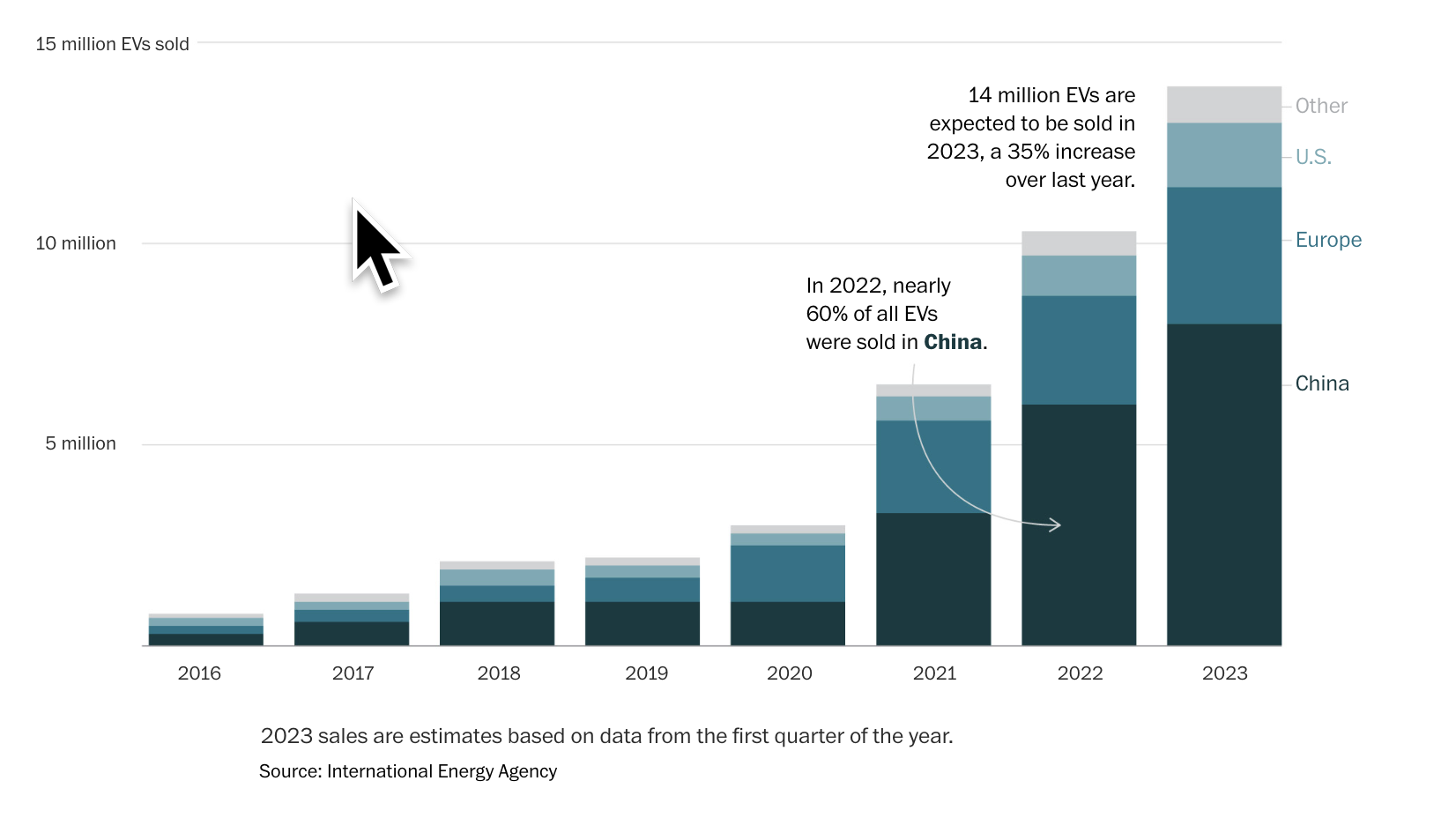Tired of feeling hopeless about climate change? Take a look at these charts.
Amanda Shendruk | September 6, 2023
Charts that illustrate the effects of climate change often share a distinct feature: that alarming, bright-red line.

The line makes a statement: This is not normal.
Sometimes the red isn’t even a line, but it’s always alarming.

A rapidly changing climate has sent measurements of all kinds careening away from the norm. This summer — which saw the hottest July and August on record — climate change contributed to an unexpected tropical storm in California, life-threatening heat waves across the United States, deadly flooding in Beijing and the fires that devastated Maui. Red lines seem to be everywhere.
Looking at charts such as these can feel distressing and disempowering. But, as Canadian science educator David Suzuki recently said, “Despair is a luxury we can’t afford any longer.”
The question is, how can people avoid hopelessness?
Christiana Figueres, the architect of the Paris climate accord, offers one solution. She calls it “stubborn optimism” — a dissatisfied, gritty, determined confidence that humanity can bring about needed change in the face of great challenges. It’s a necessary precursor to action, and adopting this attitude requires shifting focus from the past to the future.
Crucially, this doesn’t require ignoring reality or becoming complacent. Stubborn optimism calls for work toward solutions.
Remember: The red lines have resulted from past actions. But there are other charts, too, that show the positive effects that come from working to make human activity more sustainable.
These charts are equally dramatic, but their trends point toward hope.
Consider this one showing a rise in electric vehicle sales worldwide:

In Norway, nearly all new cars are electric. In Europe, it’s almost 25 percent, and in China it’s a third.
This is progress. Cutting fossil fuel use is the most important way to combat further climate change, and EVs help — as long as the cars use clean power.
Here again, there are optimistic data. The world’s largest emitters of carbon have started rapidly moving away from coal and toward wind and solar power:
Electricity generation from wind, solar and other renewable sources

Albania, Iceland, Paraguay and Norway generate almost all their electricity from renewable sources. Europe uses clean power for about half its needs. Notably, most countries in the European Union are on track to meet their 2030 renewable energy targets early.
One more hopeful chart shows that, in some major economies, annual carbon dioxide emissions already peaked decades ago.
Yearly CO2 Emissions

learly, effective action is possible.
The trouble is, the efforts made so far are not nearly enough. Global emissions overall are still on the rise.
Yearly CO2 emissions

Bending this red line in a more positive direction will take much more work. Stubborn optimism must be translated into further action.
And that might be uncomfortable. Adopting optimism — even in gritty, dissatisfied form — might feel like denying the seriousness of the climate crisis. Or it might seem incompatible with emotions such as anger, frustration or grief.
Personally, I worry that a hopeful outlook is a slippery slope to complacency. I struggle with my own competing convictions — a cynical view that those in power won’t act quickly enough and a counter-belief that optimism might be the most effective way to advance solutions.
But if this discomfort is allowed to get in the way of action, the red lines will only keep rising.
What comes next will be different for everyone, but one of the most important and effective actions is clear: electing leaders who will act quickly and decisively to lower emissions.
It works, as captured in one last hopeful chart: the impact of the Inflation Reduction Act.
Change in U.S. emissions from 2005 levels
Passed by the Biden administration a year ago, the Inflation Reduction Act is the most significant piece of U.S. climate legislation to date. The law has shifted the trajectory of U.S. emissions toward a net-zero pathway — and moved the future a little farther away from an alarming red line.


